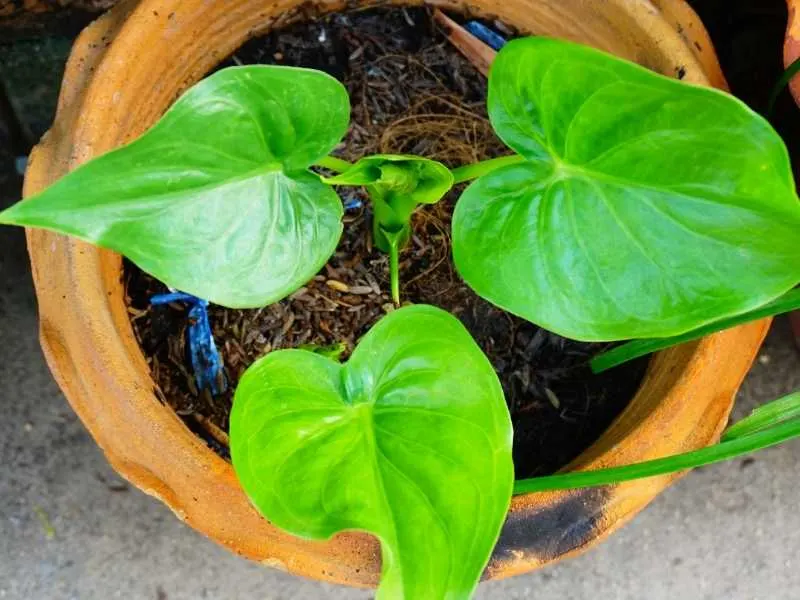Do Elephant Ear Plants Come Back Every Year?
Elephant ear plants are a dazzling tropical wonder boasting some of the boldest foliage you can possibly want. These plants appreciate moisture, humidity, and fertilizer. When these conditions are provided, they will reward any gardener with lush foliage and tropical vibes.
Given how lovely they look, you may want to enjoy their presence all year round. But, do elephant ear plants come back year after year?
Elephant ear plants are perennial plants that are enduring in Zone 9 and warmer regions. In these locations, they will come back every summer. If you are located in cooler zones and want to grow elephant ears, you should treat them as annuals which mean they will live for only one growing season before they die. Alternatively, you could dig up the tubers before the occurrence of the first frost and shift the plant to a cool, dry place during the winter.

Knowing about these plants and the ideal conditions which suit them will help you prepare for success. Read on to discover more about these perennial plants and how to help them cope during the winter months.
Related Articles:
- Why is My Elephant Ear Drooping?
- Why Do Elephant Ear Plants Cry?
- Why is My Elephant Ear Plant Leaf Turning Yellow?
- Why are My Elephant Ears Not Sprouting?
Ideal Conditions for Elephant Ear Plants
Sunlight
Elephant ear plants can be planted either in indirect sunlight or in partial shade. If you put them up in a spot where direct sunlight glares down, the leaves may get burnt.
You will do well to ensure that your elephant ears in hot spots get a little shade in the middle of the day to prevent this from happening.
Planting Time
Elephant ear plants are planted in the spring. This is when any risk of frost has completely passed. There is no point in planting them at any other time than spring as the tubers will not grow in wet conditions.
They will only sprout when the soil is warm and the temperature of the soil is 65 degrees Fahrenheit. Early June is when you can expect the temperature to be so.
You can plant the elephant ears indoors a month before you plan to keep them outside. The tubers can be planted in pots and kept near a warm sunny window.
When you plant your elephant ears during the spring, you can expect them to grow to an impressive degree within a few months. Give them plenty of room and watch these beauties grow!
Zones
Elephant ear plants are tropical, perennial plants. In the cooler regions (or zones 3 to 8), the bulbs are planted in the spring and you should treat them as annuals.
In zones 9 to 11, they can be grown outside throughout the year. In these zones, the climate will be warm and free of frost.
You need to check your USDA Hardiness zone before you plant them, so you know how to take care of them.
(You may also want to read this article about the different elephant ear plant types).
How to Take Care of Elephant Ear Plants in Winter
Tubers or rhizomes grow into elephant ear plants. To help them survive year to year, you should cut the foliage back after the first frost.
- You should do this ideally before the temperature dips below 40 degrees Fahrenheit.
- Leave 2 to 4 inches of stem and root out the underground structures carefully. Start a foot from the center of the plant.
- Storing the rhizomes or tubers is important. You should keep them in a cool, dark, dry and well-ventilated spot at 50 to 60 degrees Fahrenheit. A basement, garage or crawlspace are ideal spots.
- Allow the tubers to dry. Don’t use sand or moss because these will contain moisture and cause premature sprouting.
- If any rhizomes develop mold or spots that are soft, you should throw them away.
- Once they are completely dry, you can store them in shredded paper, growing medium like vermiculite or packing peanuts, shoebox or paper bag.
- Keep the rhizomes from touching one another; otherwise, they could rot.
It is not uncommon to find elephant ear bulbs rotted in the spring due to improper storage. Also, you must wear gloves when you work with these plants as they can be toxic.
The tubers should stay dormant throughout the winter months. You can sprinkle the shriveled tubers and rhizomes with water a couple of days before you replant them in the spring.
Wait till the soil temperature warms to around 65 degrees before planting. The nighttime temperature shouldn’t dip below 60 degrees. Otherwise, the plant will die.
You should amend the soil with organic matter like chopped leaves, peat or rich compost if the soil is very poor or heavy.
You can plant the rhizomes beneath the soil surface or with the surrounding soil. Water well and cover the bed with lightweight mulch up to 2 to 3 inches thick. Straw free of seeds, leaf mold, sawdust and compost all make excellent mulching matter.
Wait for a month, and then you will see signs of growth. Give them plenty of moisture and apply proper fertilizer every week; you will be happy to see them grow into big, bold, and beautiful plants. Do not fertilize in winter to allow your plants to rest.
Do Elephant Ears Come Back Every Year? Conclusion
If you love the exotic and tropic, elephant plant ears fit the bill perfectly. They are perennials in the warmer zones, and you can expect them to come back each summer.
But if you are growing them in the cooler zones, you should think of them as annuals, dig up the tubers before the signs of the first frost and store them in a cool, dark, and dry place over the winter.
Elephant ears cannot thrive outdoors outside their ideal hardiness zone range. They are not reliably hardy in zones colder than the USDA zone 8. You can bring up the elephant ears in pots and put them away in a frost-free area during winter in a dormant state.
Another option is to uproot the tubers in the fall/autumn and replant them during spring every year. The process is fairly straightforward, but you should store the rhizomes in the proper conditions. Otherwise, they could fail.

